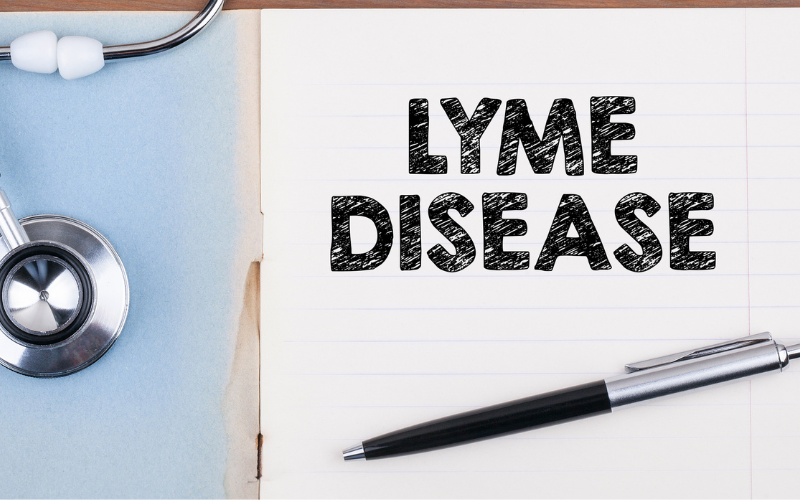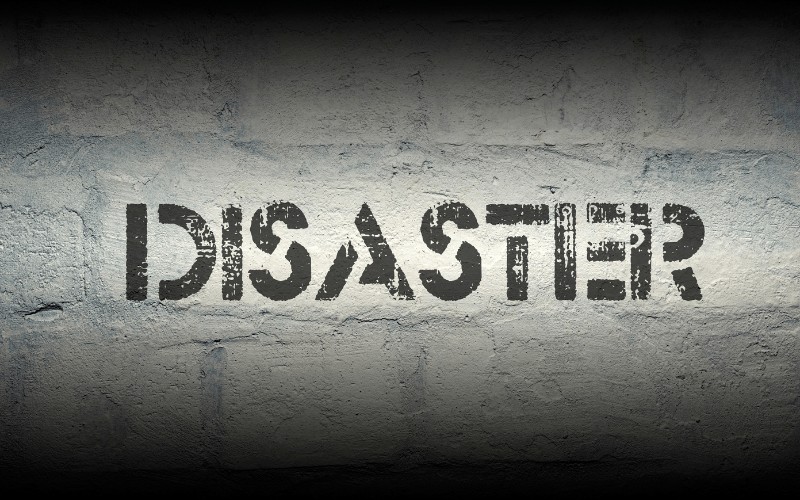May is Lyme Disease Awareness month, a time to raise awareness about Lyme disease. We turned to EMDRIA member Carolyn Yates, LMFT to tell us more about working with this population.
EMDR Therapy and Chronic Lyme Disease
Guest Blog Post by Carolyn Yates, LMFT
 Yes, Lyme disease can cause post traumatic stress disorder (PTSD).
Yes, Lyme disease can cause post traumatic stress disorder (PTSD).
For many people living with chronic illness, their bodies process the experience as ongoing trauma. I have developed clinical expertise in treating clients with Lyme disease and co-occurring tick-borne infections using Eye Movement Desensitization and Reprocessing (EMDR). It has been an effective form of treatment, and I have observed major improvements in both the functioning and mood of my Lyme patients.
Traumatic events disrupt the functioning of the limbic system. When the body is fighting Lyme disease, it can become locked in a persistent fight-or-flight response due to the infection. This is the body’s natural reaction to being attacked by bacteria. The prolonged stress from persistent Lyme symptoms, coupled with the psychological battle of uncertainty about recovery, can be profoundly distressing. Chronic illness can feel traumatic because of the sense of powerlessness it often brings. The endless search for the right treatment or doctor, relying heavily on the support of others, questioning one’s cognitive abilities due to brain fog, mourning the loss of one’s former identity, and struggling just to get out of bed each day–these are all common challenges I frequently hear from my Lyme patients.
About Lyme disease
Acute Lyme disease is the early stage of the infection caused by the bacteria Borrelia burgdorferi, transmitted through the bite of an infected black-legged tick. Many people associate Lyme disease with the classic erythema migrans (EM) or “bulls-eye” rash, but these rashes are highly variable, and some patients are asymptomatic (CDC, 2024). Some do not develop a rash but may experience flu-like symptoms in the weeks following a tick bite. When diagnosed early and treated promptly with antibiotics, acute Lyme disease is easily managed, and symptoms often resolve completely since the infection has not yet spread throughout the body. However, due to the variability of initial symptoms, many people do not receive adequate treatment for acute Lyme disease. This can result in the bacteria spreading and causing persistent symptoms, commonly referred to as Post-Treatment Lyme Disease Syndrome (PTLDS) or chronic Lyme disease. This later stage of infection often affects the nervous system, joints, and brain, leading to chronic symptoms. The CDC estimates that over 300,000 people in the U.S. are diagnosed with Lyme disease each year, and approximately 5-20 percent of patients develop PTLDS.
Lyme disease is not solely a medical condition—it has a tremendous impact on emotional health as well. It is often controversial due to the wide range of symptoms it can cause, which frequently leads to misdiagnosis. There is ongoing debate within the medical community, as some providers do not recognize chronic Lyme disease as a legitimate condition. Additionally, treatment can be complex, as patients respond differently to various protocols, resulting in a long and frustrating process of trial and error.
How can EMDR therapy help?
I find that EMDR reduces the intensity of this internal battle with the disease and helps clients unlock positive resources to better manage their symptoms. Grief is a significant aspect of the struggle with Lyme disease, as patients often have to adjust their expectations, dreams, and goals due to the toll the symptoms take on their bodies. Social isolation and anxiety are common, as patients doubt their ability to socialize due to chronic fatigue and fear that others will misunderstand their illness. Depression is also prevalent because of the drastic lifestyle changes, tendency to withdraw, and loss of hope for the future. EMDR therapy addresses these core issues, loosening their grip and opening the door to hope.
Integrating EMDR therapy phases
For many clients with Lyme disease, the History-Taking phase of EMDR becomes a timeline of their illness, helping to lay the groundwork for treatment planning. With this population, I have found that validating their medical experience is essential in creating a safe therapeutic space. Many of these clients harbor mistrust or anxiety when meeting new healthcare providers due to negative past experiences. I also work to instill hope for healing, as many feel discouraged about making progress with their health. I aim to be realistic and set reasonable expectations, as treatment can take years, and a full return to pre-Lyme health is not guaranteed. It is also important to distinguish between physical and psychological health as we move through the EMDR process. I always encourage clients to continue with their medical treatment with a provider they trust. Our work to relieve the psychological symptoms can be concurrent, however, it cannot replace the medical treatment to eliminate the bacteria in the body.
During the Preparation phase of EMDR, I have found that the Calm Place Exercise and Resource Development and Installation are particularly helpful in creating scaffolding in the brain before we start the Desensitization phase. These techniques help patients develop a greater sense of peace in their bodies, which is critical, as many have developed a negative relationship with their bodies. These exercises also aid in somatic regulation and calming the central nervous system, fostering a sense of trust in their body. We work to identify memories when the client felt “whole,” able-bodied, or successful in overcoming their symptoms, even for brief moments. Psychoeducation during this phase is crucial to building trust in both the process and the therapist. Educating my clients on the science behind EMDR therapy and sharing my knowledge of Lyme disease helps to ease their anxieties in meeting a new provider.
Common themes
During the Desensitization phase of EMDR, I have observed several recurring themes in Lyme patients. The physical distress experienced during the onset or peak of the illness is often stored in the body as a primal, life-threatening trauma. A common Negative Cognition associated with these memories is, “I am going to die,” which falls under the PTSD core belief cluster. These memories are usually stored somatically in the body, so EMDR works effectively to clear out the body memory of that medical crisis.
Another theme is the combative relationship with their physical body. Many clients lose confidence in their ability to function due to debilitating symptoms such as brain fog, severe fatigue, inflammation, joint pain, and headaches. Common Negative Cognitions include “I am weak” or “I am defective,” in the Vulnerability and Defectiveness core belief clusters. Cognitive symptoms, in particular, can cause patients to doubt their thoughts and abilities. Brain fog can be a profoundly disorienting experience, exacerbating anxiety and depression. It destabilizes other aspects of the psyche by making concentration difficult and increasing mental fatigue, further intensifying feelings of inadequacy. I help clients process memories related to disruptions in functioning with the goal of shifting negative limiting beliefs into adaptive ones, such as “I can control what I can,” “I am doing the best I can,” and “I can survive.” Interestingly, brain fog has not impeded cognitive processing with EMDR; in fact, many clients report that their brains feel more activated and less foggy after treatment.
Another significant theme is interpersonal trauma from medical providers who dismissed or invalidated their symptoms. This often leads to mistrust and Negative Cognitions such as “I am powerless” or “I am unimportant/ invisible.” Some clients lose faith in modern medicine altogether. However, I have worked with many incredible Lyme-literate doctors who provide affirming, effective care. I always encourage clients to advocate for their medical needs and seek a provider who instills confidence. While EMDR therapy can help reprocess past negative experiences with healthcare providers, experiencing affirming medical care is an important part of their healing.
EMDR therapy as empowering
Treating chronic Lyme requires immense patience and perseverance. Many patients experience a Jarisch-Herxheimer reaction (JHR), an acute, transient response to antibiotic treatment caused by the rapid release of toxins from dying spirochetes. This can lead to an overactive immune response, causing fever, chills, headaches, muscle aches, nausea, tachycardia, and hypotension. Since symptoms often worsen before improving, enduring this process requires mental and physical resilience coupled with trust in the treatment. Many patients feel trapped in their bodies, oppressed by a disease that sidelines them from living their lives. EMDR helps strengthen their internal resources, empowering them to persist in their healing journey.
It takes incredible psychological strength to endure the often agonizing treatments required to regain health. I have great admiration for my Lyme clients as they continue to fight this disease, and it is deeply rewarding to offer EMDR therapy to provide them relief from their suffering. EMDR has the power to reduce distress, foster resilience, and help clients regain a sense of normalcy in their lives.
Carolyn Yates is a Licensed Marriage and Family Therapist maintaining a private practice in Southport, Conn. She received her M.A. in marriage and family therapy from Fairfield University and her B.A. in psychology from the College of the Holy Cross, and has been in practice since 2011. Yates has been EMDRIA Certified since 2016.
References
CDC. (2024, Aug 26.) About Lyme disease. Website. https://www.cdc.gov/lyme/about/index.html
Crystal, J. (2022, June 16). Lyme and post-traumatic stress disorder. Global Lyme Alliance. https://www.globallymealliance.org/blog/lyme-and-ptsd
Kuehn, B. M. (2013). CDC estimates 300000 US cases of Lyme disease annually. JAMA, 310(11), 1110. https://doi.org/10.1001/jama.2013.278331
Back to Focal Point Blog Homepage
Additional Resources
If you are a therapist interested in the EMDR training:
- Learn more about EMDR therapy at the EMDRIA Library
- Learn more about EMDR Training
- Search for an EMDR Training Provider
- Check out our EMDR Training FAQ
If you are EMDR trained:
- Check out EMDRIA’s Let’s Talk EMDR Podcast
- Check out the EMDRIA Focal Point Blog
- Learn more about EMDRIA membership
- Search for EMDR Continuing Education opportunities
If you are an EMDRIA Member:
Date
May 16, 2025
Contributor(s)
Carolyn Yates
Topics
Medical/Somatic, Pain/Chronic Pain





